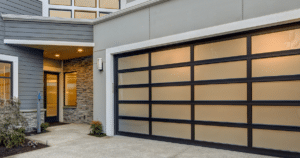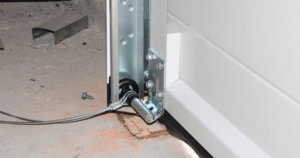
From Modern to Classic: Best Garage Door Designs in Mission Viejo, CA, You Must See!
Looking for the best garage door designs in Mission Viejo, CA? Discover modern, classic, and custom styles that elevate curb appeal and enhance functionality. Explore the latest trends today! A well-designed garage door enhances your home’s appearance and increases property value and security. Whether you prefer sleek modern aesthetics or timeless classic styles, Mission Viejo homeowners can access a wide range of garage door designs that cater to different architectural styles and personal preferences. From contemporary glass-paneled doors to intricately designed wooden masterpieces, the right garage door can significantly impact the look and feel of your home. Finding the best garage door designs in Mission Viejo, CA, requires understanding durability, functionality, and style. Homeowners often struggle with choosing the right material, color, and design that complements their home’s exterior. With the proper guidance, you can transform your garage into a standout feature that seamlessly blends with your home’s aesthetic. In this guide, we’ll explore the most sought-after garage door designs available in Mission Viejo, showcasing both modern and classic styles. Whether you’re looking for a new installation or a stylish upgrade, our recommendations will help you find the perfect garage door that suits your taste and enhances your home’s overall appeal. Modern Garage Door Designs: Elevate Your Home’s Exterior Sleek Aluminum and Glass Garage Doors Aluminum and glass garage doors have surged in popularity due to their sophisticated and contemporary appearance. These doors offer a seamless combination of style and functionality, making them an excellent choice for homeowners who appreciate modern architecture. With their clean lines and minimalist appeal, aluminum and glass garage doors allow for a sleek and airy feel, letting natural light flood into the garage space. One of the key advantages of these doors is their rust-resistant properties, making them particularly well-suited for homes in coastal regions like Mission Viejo. Unlike traditional steel garage doors that may be prone to corrosion over time, aluminum doors maintain their pristine look with minimal upkeep. They come in various frame colors and glass options, including frosted, tinted, and clear panels, allowing homeowners to customize their look to match their home’s overall design. Whether you prefer a bold contrast or a subtle integration with your home’s exterior, these doors offer elegance and functionality. Minimalist Flush Panel Garage Doors Flush panel garage doors are an excellent choice for those who favor a clean and understated aesthetic. Characterized by their smooth, flat surfaces, these doors provide a sleek, sophisticated look that complements contemporary home designs. They are available in a variety of high-quality materials, including steel, aluminum, and composite, ensuring durability and long-lasting performance. The beauty of flush panel garage doors lies in their versatility. They can be customized with different finishes and textures, such as wood grain patterns or metallic coatings, to create a unique appearance that enhances your home’s architectural style. Additionally, their streamlined design pairs well with modern exteriors, creating a cohesive and polished look. Whether you opt for a monochromatic finish or a bold color contrast, flush panel garage doors offer a refined and timeless appeal that elevates the overall aesthetic of your property. Full-View Glass Garage Doors Full-view glass garage doors are the perfect option if you want to make a bold statement and embrace an industrial-chic vibe. These eye-catching designs feature sturdy aluminum frames with expansive glass panels, creating a striking and contemporary visual effect. Ideal for modern and luxury homes, full-view glass garage doors add an element of sophistication while maximizing natural light exposure. Homeowners can choose from various glass options, including clear, frosted, tinted, and mirrored finishes, allowing for different levels of privacy and aesthetic appeal. The aluminum frames are available in multiple powder-coated colors and finishes, enabling seamless integration with the home’s overall design theme. Additionally, these doors provide excellent insulation and durability, ensuring year-round functionality and comfort. Beyond their stunning appearance, full-view glass garage doors can also serve as an architectural feature that extends indoor-outdoor living spaces. Many homeowners use these doors for garages, patios, or even as partitions for indoor recreational areas, creating a versatile and modern living environment. Whether used for residential or commercial spaces, these garage doors make a lasting impression and enhance the contemporary appeal of any property. Classic Garage Door Designs: Timeless Elegance and Durability Carriage House Garage Doors For those who appreciate traditional aesthetics, carriage house garage doors bring a touch of historic charm to any home. These doors often feature decorative hardware, wooden textures, and swing-out designs, creating a rustic yet elegant feel. Available in custom wood or steel, they are an excellent choice for homeowners who want a classic look with modern convenience. Raised Panel Garage Doors Raised panel garage doors are one of the most versatile options, blending seamlessly with various home styles. Featuring symmetrical raised sections, these doors add depth and texture while maintaining a timeless appearance. They are available in steel, fiberglass, and wood, ensuring durability and style for years. Custom Wood Garage Doors Custom wood garage doors provide an unparalleled level of craftsmanship and beauty. Homeowners in Mission Viejo who want a unique and personalized design can opt for handcrafted wooden garage doors that complement their home’s architecture. With intricate carvings and premium wood selections, these doors enhance curb appeal and value. Choosing the Right Garage Door Material for Your Home Steel Garage Doors: Strength and Security Steel garage doors are a popular choice for homeowners who prioritize durability, security, and low maintenance. Known for their strength, these doors provide excellent protection against intruders, making them a top choice for security-conscious homeowners. Additionally, steel garage doors can withstand harsh weather conditions, from heavy rain to extreme temperatures, ensuring long-term reliability. One of the biggest advantages of steel garage doors is their versatility in design. They come in a wide range of styles, colors, and finishes, including woodgrain textures that mimic the natural beauty of wood without the associated upkeep. Homeowners can choose insulated or non-insulated options, with insulated steel doors offering added energy efficiency and noise reduction—ideal for attached garages.





